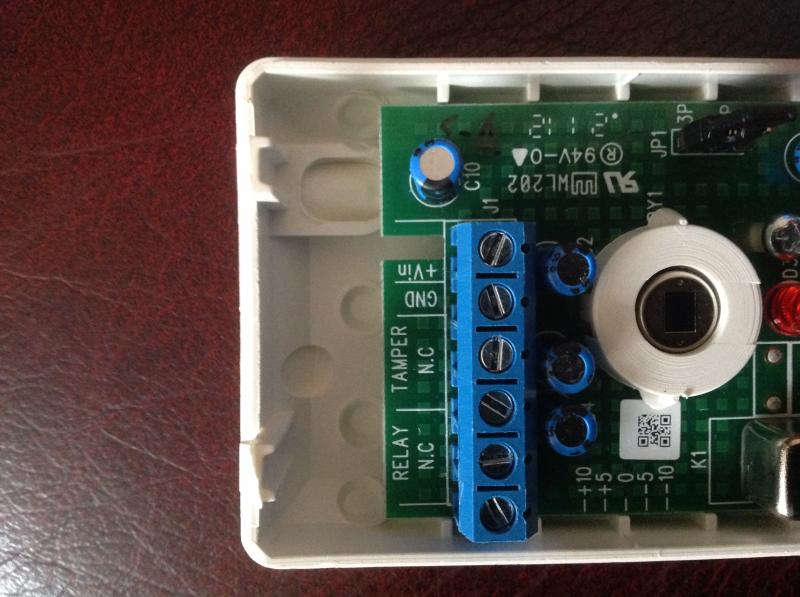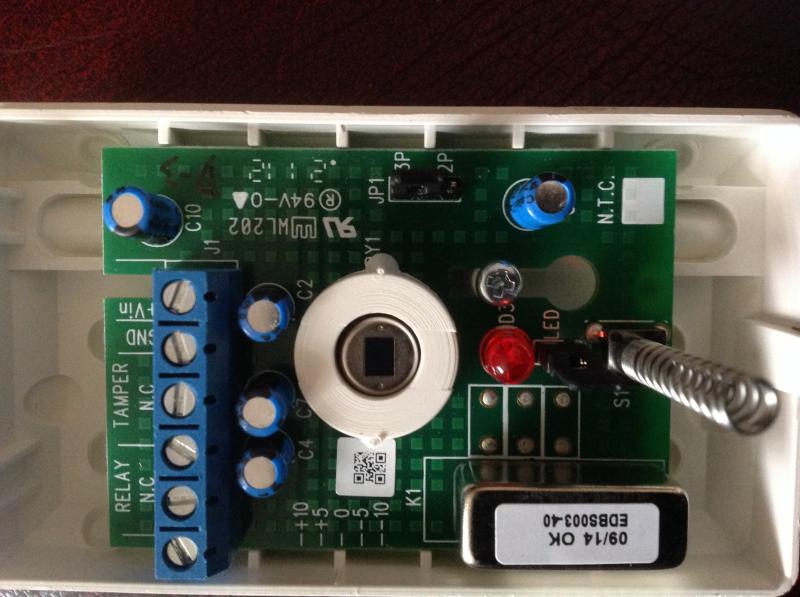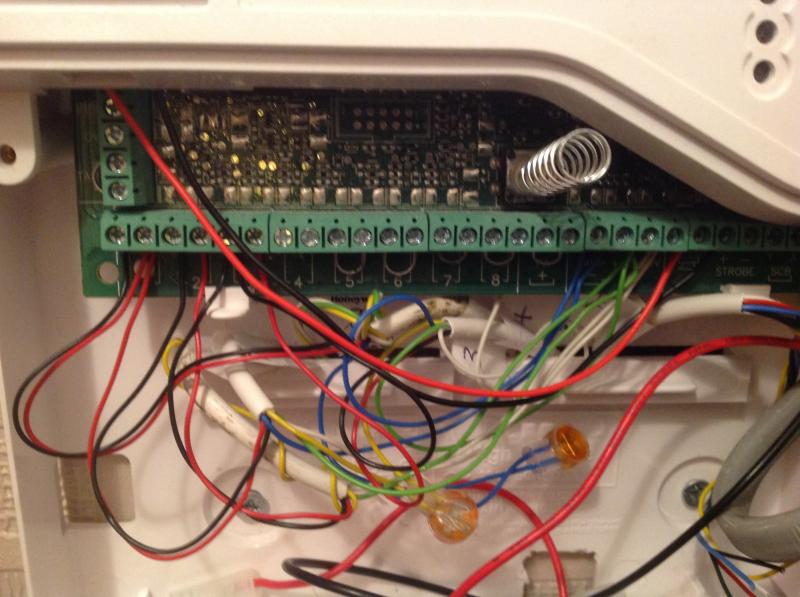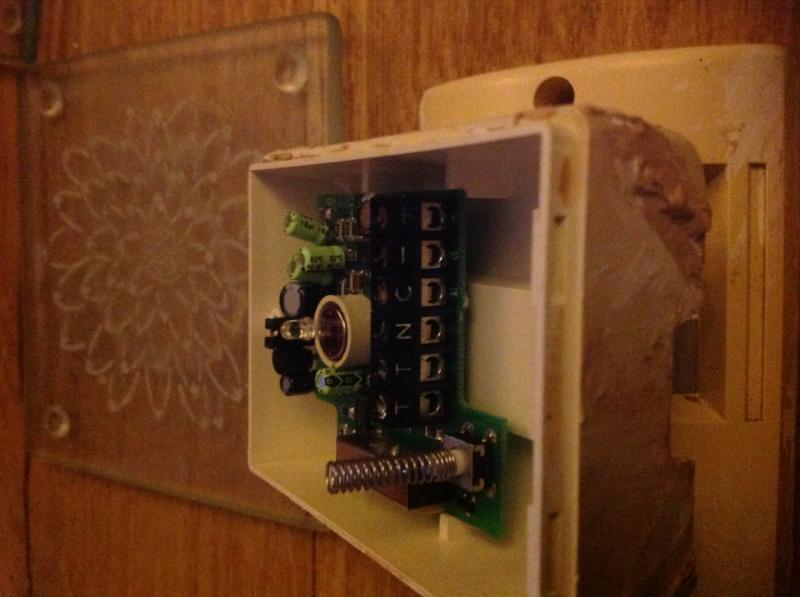You are using an out of date browser. It may not display this or other websites correctly.
You should upgrade or use an alternative browser.
You should upgrade or use an alternative browser.
+ = + Aux Pos
- = - Aux Neg Ground
T = Tamper
T = Tamper
N C = Relay NC (Alarm circuit)
N C = Relay NC (Alarm circuit)
- = - Aux Neg Ground
T = Tamper
T = Tamper
N C = Relay NC (Alarm circuit)
N C = Relay NC (Alarm circuit)
I would meter the voltages. Your labeling doesn't line up with standard colours for the power.
Are you sure it's not TT + - NC from top to bottom ? With red being +12V and black being 0V ?
If you can get that right, then it's green and white to the two tamper NC terminals (doesn't matter which way around). Red to +Vin. Black to GND. And blue and yellow to the two Relay NC terminals (again does not matter which way around).
As I say though, check that black and red have 12V dc.
Are you sure it's not TT + - NC from top to bottom ? With red being +12V and black being 0V ?
If you can get that right, then it's green and white to the two tamper NC terminals (doesn't matter which way around). Red to +Vin. Black to GND. And blue and yellow to the two Relay NC terminals (again does not matter which way around).
As I say though, check that black and red have 12V dc.
A
alexmc60
He's right, just look at the pictures
Who's right? The first picture shows the old pir on the wall. All was working ok prior to removal. I'm going to try with a meter later.
The green and white are + and - on the panel though.
A
alexmc60
I would meter the voltages. Your labeling doesn't line up with standard colours for the power.
Are you sure it's not TT + - NC from top to bottom ? With red being +12V and black being 0V ?
If you can get that right, then it's green and white to the two tamper NC terminals (doesn't matter which way around). Red to +Vin. Black to GND. And blue and yellow to the two Relay NC terminals (again does not matter which way around).
As I say though, check that black and red have 12V dc.
White and green have 12v dc.
What are you on about there are no "standard colours" for anything in the alarm business................. Your labeling doesn't line up with standard colours for the power.
Companies use what ever suits them.
It's pretty much common sense for red and black to be wired as power. To obfuscate power cabling is unwise and will only lead to blown fuses and damaged equipment.
If it's something that you practice, then you're in the minority.
If it's something that you practice, then you're in the minority.
It's pretty much common sense for red and black to be wired as power. To obfuscate power cabling is unwise and will only lead to blown fuses and damaged equipment.
If it's something that you practice, then you're in the minority.
It's something I have experienced for 40+yrs in this game from LOTS of different companies I've come across.
"obfuscate", bewilder, mystify, puzzle, perplex, baffle, confound, bemuse, befuddle, nonplus etc
Which of these applies?
Obfuscate refers to people, not things.
I'm not referring to a thing. I am referring to the practice. It's something that 'people do'. An attempt to make something secure by obscuring it. It's very common in poor security implementations both hardware and software.
If you need to look up an online dictionary in an attempt to understand my posts, then that explains things.
If you need to look up an online dictionary in an attempt to understand my posts, then that explains things.
I've seen other systems where the installer has used red and black for ALL zone inputs, blue and yellow for tamper and green and white for power. This way, all cabling to contacts, pirs, vipers, etc. uses the same convention. 4-core goes to contacts, 6-core to powered devices with the extra pair (green and white) being used for the power.
There is some logic to it... But I don't like it either! The really strange ones are those who use red and yellow for power...
There is some logic to it... But I don't like it either! The really strange ones are those who use red and yellow for power...
Think the use of green and white for power stems from the use of 4 core for alarm and tamper(contacts) and six core for pirs and the colours carrying on the same !
DIYnot Local
Staff member
If you need to find a tradesperson to get your job done, please try our local search below, or if you are doing it yourself you can find suppliers local to you.
Select the supplier or trade you require, enter your location to begin your search.
Please select a service and enter a location to continue...
Are you a trade or supplier? You can create your listing free at DIYnot Local
Similar threads
- Replies
- 1
- Views
- 2K
- Replies
- 5
- Views
- 986
- Replies
- 2
- Views
- 880






